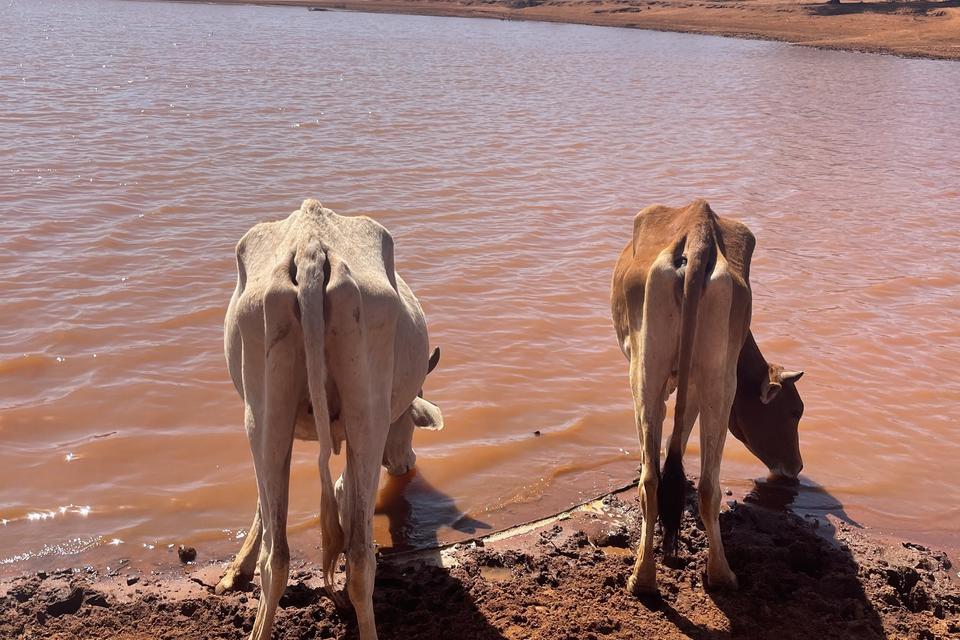New Digital System Helps Ethiopia’s Pastoralist Communities to Prepare for the Unpredictable
- From
-
Published on
09.07.24
- Impact Area

The rangelands covering more than half of Ethiopia’s landmass feed the country’s cattle, providing incomes for the country’s many pastoralist communities. Yet, this land faces growing acute insecurities, having faced eight major droughts in the past 15 years. This cumulative disruption to pasture and water availability has caused mass livestock death, including over 4.5 million animals in 2022 alone, impacting food security and livelihoods, and causing the displacement of many communities in search of reliable food and income sources.
Facing increasingly frequent and severe climate impacts, pastoralist communities and government agencies require support to make decisions that benefit livestock, communities and Ethiopia as a whole.
To address this need, the Alliance collaborated with Ethiopia’s Ministry of Agriculture and the Ethiopian Institute of Agricultural Research (EAIR), developing the innovative ‘Waterpoints Monitoring’ platform. The platform – part of the Livestock Water Monitoring and Risk Management System (LWMRMS) Project funded by the Bill & Melinda Gates Foundation – aims to build resilience in vulnerable pastoralist communities by supporting their adaptation to challenging climatic challenges.
The pasture, water and climate monitoring platform was developed to support gender and socially inclusive drought risk management, aiding decision-making through the provision of near real-time information to livestock farmers and other stakeholders across Ethiopia.
The lack of access to timely and comprehensive data is affecting Ethiopian pastoralists’ ability to adapt to climate change.
Sintayehu Alemayehu – Research Team Leader at Alliance – leads the LWMRMS Project, and was one of the scientists behind the new platform’s development. Born and raised in Moyale, Ethiopia – an area home to many pastoralist communities – Alemayehu knows well the challenges faced by the region’s livestock producers: “I understand what the pastoralist context is, what the gaps and the challenges are,” Alemayehu said. “It’s heartbreaking to witness the community facing the worst drought in its history.”
With the largest livestock population in Africa, Ethiopia’s livestock sector contributes significantly to the country’s economy, accounting for 15% of export earnings and 36% of agricultural gross domestic product. However, due to changing weather patterns, many livestock producers in Ethiopia are unable to rely on the same water and pasture sources as before, placing growing pressure on what were traditionally more reliable sources of nutrition, incomes, and livelihoods. To protect their livestock, pastoralists need the resources to make informed decisions, manage risks, and strengthen their resilience to the impacts of climate change.
Pastoralist communities have not traditionally had access to a livestock early warning information system that could predict and provide comprehensive information on water and pasture availability. This lack has limited the ability of pastoralists, the national government and other development partners to navigate pressing climate challenges.
Related news
-

Mapping for Resilience: How Spatial Data is Transforming Karamoja Cluster
Ibukun Taiwo02.07.25-
Climate adaptation & mitigation
Pastoral communities in the Karamoja Cluster (a region spanning Kenya, Uganda, South Sudan, and Ethi…
Read more -
-

Building Resilience and Regeneration: The Central Highlands Ecoregion Foodscape (CHEF)
Sehlule Muzata02.07.25-
Climate adaptation & mitigation
At the CGIAR Sustainable Farming Program (SFP), we believe that collaboration is essential for trans…
Read more -
-

Planting with Precision: How Weather and Climate Information is Changing Bean Farming in Rwanda
The Alliance of Bioversity International and the International Center for Tropical Agriculture (CIAT)01.07.25-
Climate adaptation & mitigation
Imagine weather information as a GPS for farmers. Without it, the journey becomes uncertain, filled…
Read more -
